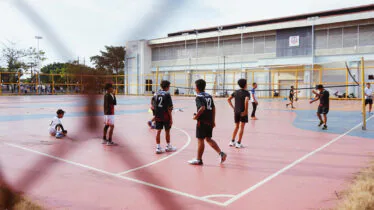I was lucky and determined to keep teaching as a school leader and instructional coach
“Do everything you ask of those you command.”
—General George Patton
I was accompanying a principal on classroom walk-throughs. In the hallways between these short observations, I asked him what details of the teachers’ efforts caught his eye.
“Making sure they have the learning objectives on the board, and that the activities meet those objectives.” He said the district had made learning objectives a priority for the year.
I asked about the commitment to last year’s focus on differentiated instruction, which had gained some traction but was far from fully integrated into practice.
The principal sighed, “Yes, that too.”
“I don’t mean to make this too complicated,” I said, “But didn’t the district curriculum coordinators send out an article on cultural inclusion and equity?”
We stopped at the door of the next classroom. He added, “We could also be looking at real life applications, the value of the homework being assigned, time on task, the way instructions are provided, effective use of classroom management techniques…”
We stood silently for a moment before pushing open the next door, pondering the enormity of all the work we do in schools. I asked, “How long has it been since you were in the classroom teaching? Do you think you could meet all the challenges asked of teachers today?”
He laughed. “No way. It’s been about 8 years since I taught–I was good, but I don’t know how good I would be now.”
***
I liked this principal’s honesty. I also liked that he was not angry at teachers. He knew that their work was exceedingly complex. He knew that few teachers had the rare combination of time, skills, and motivation to admirably manage everything asked of them. He knew that they cared and worked hard, and that almost all of them would struggle to meet the demands of the job.
Many instructional leaders I work with—superintendents, assistant superintendents, curriculum coordinators, principals, assistant principals, instructional coaches—forget how hard it is to teach, even as the system demands more of their teachers. Simply put, distance creates distance. As a school leader, your peers are other school leaders, not the professionals in the classrooms. The real-life experience of teaching, the day-to-day intensity, fades a little bit each month one is not teaching.
School leaders know that most teachers want to be excellent, and the impediment to excellence is not located primarily in the teachers, but in the system itself. And no one seems to have the power to change the system. In the absence of the power to impose systemic structural change, an instructional leader’s worth is based on impacting individual teachers.
Because instructional leaders bond outside of the classroom with other leaders, by default the teaching staff becomes the “other,” the ones whose imperfections must be corrected to effect school reform. As Bolman and Deal write: “Much of the time, faulting people gives us simplistic answers that block us from seeing systems” (Bolman & Deal, 1997).
We see people first, and systems lurk in the shadows. It is said that children first aspire to become teachers because of an inspirational teacher—and that teachers aspire to become leaders because they think they can do the job at least as well as the leaders they have had to work under. Not enough teachers have met the inspirational leader who understands how hierarchical systems of power impact every relationship and interaction, one who understands that power creates distance, and distance distorts understanding—and who knows how to bridge that distance.
I learned this lesson within six months of leaving the classroom. I was meeting with a group of teachers who were struggling with a school-wide expectation. I was asked how to handle a complicated situation that had emerged in one teacher’s class. I suggested what I thought was an elegant fix, but instead of nods of appreciation, the room fell silent. Finally a teacher softly asked me, “But you could only do that in an ideal world, right? Not really here, right?” She was spot-on; I had already lost my connection to the context of work within which those teachers labored every day.
That distance from the nitty-gritty grind of teaching increases the challenges of effective instructional leadership. Isolated from the daily challenges of teaching, instructional leaders may forget what they knew as teachers, that “…the actual solutions about how to best meet the challenges of the moment—those thousands of strategic challenges encountered everyday—have to be made by the people closest to the action” (Pascale, Millemann, Gioja, 2000).
There is a way that instructional leaders can get up close to the action: to remain rooted in the practice of teaching; to understand how structures constrict or liberate teacher instructional effectiveness; to measure and prioritize all the demands of the position; to confidently advocate for the resources teachers need; to gain again and again the trust and respect of their staff–and that is to get back in the classroom part-time as a teacher.
I fear that the previous sentence has made innumerable instructional leaders exclaim in frustration, “There’s no way I could do my current job and teach, even part-time!” I ask for a moment of your patience before we address those concerns. For a moment, linger on this question: “What would be the benefits for my school if I went back in the classroom part-time?”
Here are a few benefits:
A robust evaluation of expectations: Before teachers have to implement instructional practices, school leaders need to deeply understand what those practices entail—not in the isolation of textbooks, offices, or a summer workshop, but with their students in their school with their schedules and their resources and their competing demands in their community in that year. The classrooms of instructional leaders are the school’s test labs, helping to establish expectations and roll-out plans, especially for teachers who are not as seasoned and skilled—if the work is hard for an instructional leader, it will be exponentially harder for a novice.
Identifying critical complications: The effectiveness of an instructional practice is not always discernible in the first days or weeks of the roll-out. Instructional leaders can join with other staff in untangling implementation problems as they appear. The instructional leader who has been wrestling with the details, in parallel with teachers, can separate the complaints of those who simply hate change from those who are really trying to get it right. Those dedicated teachers “…may see a fatal flaw, perhaps an implementation landmine that needs to be attended to. Those teachers are not asking you to abandon your idea…they are acting responsibly” (Benson, 2014). Instructional leaders in the classroom will know best how to measure staff concerns.
Identifying effective adjustments: In his study of the effort to have hospital staff wash their hands—a seemingly simple step that could save the lives of approximately 90,000 hospital patients in the United States every year—Atul Guwande found that top-down initiatives had failed, despite everyone knowing the importance of hand washing to limit the spread of infection (Guwande, 2007). Guwande eventually finds a hospital that has reduced infection rates to practically zero. At that hospital, the leadership met with the staff and asked the staff what they knew they needed in order to solve the hand-washing problem. Ideas poured in. Staff who had figured out innovations on their own became role models for their peers, because their innovations proved effective in the settings everyone shared. Instructional leaders who speak from current lived experience, and join with teachers having that lived experience, will be the most effective advocates for the adjustments and innovations that keep instructional practices alive and well.
Creating a safe dialogue of instructional practice: Those above you in a hierarchy can shift between expressing a friendly camaraderie to making demands; those below in a hierarchy never forget the power held by those above them. That ceaseless and often implicit understanding of power—to evaluate, to withhold pay raises, to terminate employment—often corrupts honest dialogue about instructional practices; e.g. most teachers understandably don’t initiate conversations with their boss about what is not going well.
But that paradigm can be slowly and steadily shifted by an instructional leader who opens a meeting by saying, “I ran out of time today with lesson seven. I know some of my students were confused. Has anyone else had that same problem? Has anyone successfully gotten through lesson seven?” Instructional leaders should be, above all else, models of learning on the job, and that means being in the classroom. “Mistakes are part of a school leader being an active learner, identifying errors, and making commitments to improve practice in the presence of staff, to model a growth mindset.” (Poliner & Benson, 2017).
Modeling good instructional practices: Instructional leaders were often excellent teachers. By moving instructional leaders out of the classroom, the next generation of students misses out on learning with such strong practitioners. And the next generation of teachers never get to see those leaders in front of students—I am not talking about the occasional demonstration lesson, but in the thick of it all. There are few better examples of how to run a class than observing a seasoned veteran on the job.
***
There is a reason for leaders returning to the classroom that is not specifically tied to the success of instructional initiatives. Instructional leaders need to return to the classroom for their own well-being, for their joy, for the immeasurable tonic of being with young people on the path of learning. It is commonly said that the best thing about schools are the kids, and the pull of administrative tasks drags leaders farther and farther from the kids. Without relationships with students, school leaders miss out on something essential about the work, perhaps a reason that half of new principals quit in their third year on the job (School Leaders Network, 2014). I fully believe that a consistent dose of teaching, of full engagement with students in the role of instructional practitioners, will help more school leaders hang in. The time with students will often be the best time of the day. The system should not penalize ambitious educators by excluding them from teaching!
And for instructional leaders who feel a bit scared about going back, who worry that the job of teaching will prove way harder than you want to admit, that’s even more a reason to head back to the classroom part-time. Your efforts will reveal wisdom about teaching, learning, and leading in your schools in ways no other actions can match. You will be a better instructional leader.
To return to the classroom part-time, do what Guwande suggests from the hand-washing study: sit with your leadership team and ask, “What do we need to do to get back into the classroom to teach part-time?” The solutions are going to be local, based on your abilities to maneuver your particular school schedules, contract restrictions, and resources. If you want to do it badly enough, you can do it!
That said, the following ideas will help; none alone will be sufficient to ease all of your concerns, but collectively the time to teach will become available:
Delegate more: I’ve never met a school leader who couldn’t delegate more tasks to others. If you believe that getting back into the classroom matters, this is your chance to take more off of your plate.
Limit the definition of an emergency for you: As has been said, you are not irreplaceable unless you are immortal. The school functions when you are sick at home, and when you are out of the building for an important meeting. It will also function for the time you are in a classroom. Don’t be disturbed by anything that can wait, or that another leader can temporarily handle.
Teach in your area of strength: School instructional leaders have a big tool kit of instructional moves in their areas of strength. Given the times that your administrative duties and deadlines pile up, you may be squeezing in lesson planning as you commute or fall asleep. Such situations will also remind you that teachers have similar struggles through the year.
Reduce the volume of papers you have to grade: Instructional leaders are often experts at assessment, able to glean from classroom observations and brief written tasks what students know. Be a role model for assigning homework only when it has real instructional merit–a practice that a vast majority of teachers will appreciate. Demonstrate how quizzes and test can be pared to their essentials.
References
- Benson, J. (2014) Principals: Intentions and Questions at Staff Meetings. On-line article retrieved from http://www.jeffreybensonblog.com/2014/11/principals-intentions-and-questions-at.html
- Bolman, L., Deal., T. (1997). Reframing Organizations. San Francisco: Jossey-Bass.
- Guwande, A. (2007). Better, A Surgeon’s Notes On Performance. New York: Picador
- Pascale, R., Millemann, M., Gioja, L. (2000). Surfing the Edge of Chaos, New York: Crown Business Publishing
- Poliner, R. Benson, J. (2017). Teaching the Whole Teen. Thousand Oaks, CA: Corwin



